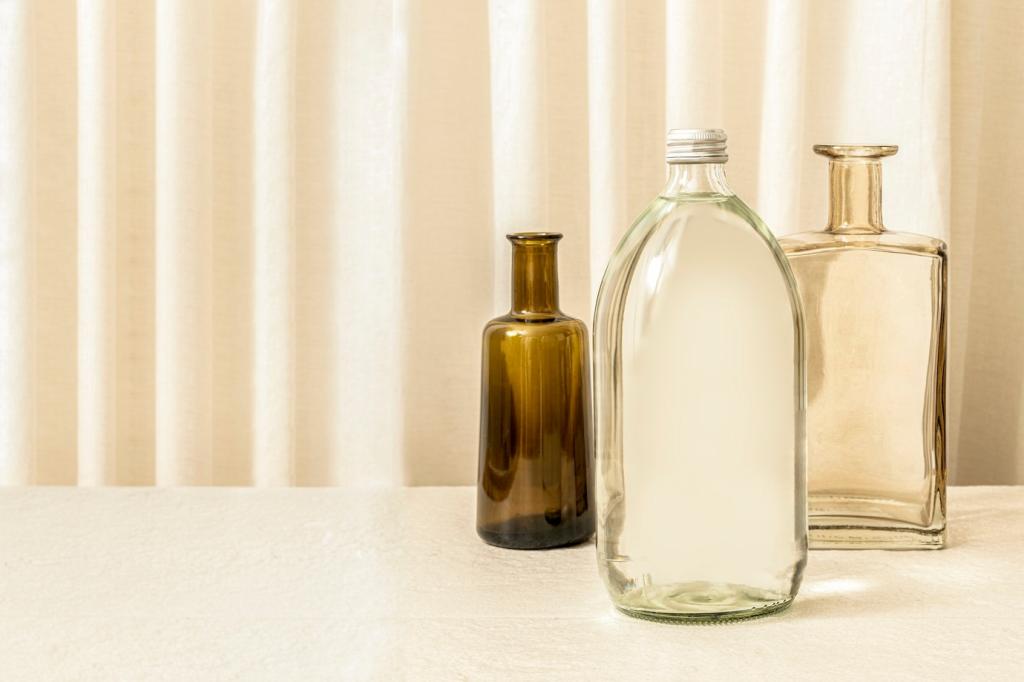Sustainable Wood Alternatives for Interior Design
Discover the future of eco-conscious interiors with sustainable wood alternatives that balance aesthetics, durability, and respect for the environment. This page guides interior designers, architects, and homeowners in selecting materials that offer the charm of wood without sacrificing environmental stewardship, ensuring that spaces remain beautiful while contributing positively to our planet’s health.

Environmental Impact of Traditional Timber
The extensive use of traditional hardwoods has significant drawbacks for ecosystems. Deforestation leads to loss of biodiversity, soil degradation, and increased greenhouse emissions. Many prized woods, like teak and mahogany, come from slow-growing species, making their harvesting unsustainable in the long term. Sourcing alternatives lessens these adverse impacts while still providing the warmth and appeal associated with wood in interior spaces.
Market Shifts Toward Sustainability
Consumer awareness and regulatory changes are driving the adoption of sustainable materials in the design industry. Green certifications and responsible sourcing have become selling points for interior projects. As a result, suppliers and manufacturers are broadening their offerings, focusing on both new engineered products and reconceived uses of agricultural byproducts. These changes are making environmentally friendly choices more accessible and attractive to all market segments.
Balancing Aesthetics and Responsibility
It’s possible to create interiors that are both striking and sustainable. Modern technology and innovation in materials ensure that eco-friendly options meet or even surpass the visual standards set by traditional wood. Designers can now achieve the desired ambiance and style for their clients while maintaining a clear conscience about environmental responsibility. This balance is at the heart of the movement towards sustainable wood alternatives.
Engineered Wood Products
Plywood is composed of thin layers of wood veneer bonded together, usually with eco-friendly adhesives. By using thin slices from larger logs, it maximizes wood usage and reduces waste. Its high strength-to-weight ratio, dimensional stability, and ability to take on different surface finishes make plywood a go-to solution for sustainable interior furniture, cabinetry, and wall treatments. It allows designers to experiment with curved forms and innovative design while ensuring minimal impact on forests.
Bamboo: Nature’s Rapid Renewable
Bamboo’s inherent durability rivals that of many hardwoods, while remaining lightweight and flexible for design applications. Architects and designers prize bamboo for its distinct linear grain and range of warm hues, making it suitable for various interior styles. Its hypoallergenic properties and resistance to pests add another layer of practicality, ensuring spaces are both healthy and sustainable.

Reclaimed and Salvaged Wood
The Environmental Case for Reclaimed Wood
Opting for reclaimed wood diverts valuable resources from landfills and decreases the demand for newly harvested timber. Salvaged wood already embodies a significant investment of energy and craftsmanship, so reusing it maximizes its lifecycle and drastically lowers the carbon and environmental footprint of interior projects. Utilizing reclaimed wood supports circular design principles and sets an inspiring precedent for materials reuse in the industry.
Distinctive Aesthetic Appeal
Reclaimed woods offer patinas, grain patterns, and colorations born from decades or centuries of use. These imperfections—nail holes, weathering, and marks—lend authenticity and warmth to interiors that new lumber cannot easily replicate. Whether used in feature walls, furniture, or flooring, reclaimed wood ensures that each element is truly one-of-a-kind and connects occupants to the story and heritage of the material.
Sourcing and Certification Considerations
Designers should source reclaimed wood from reputable suppliers who can verify the origin and safety of materials, checking for treatments or contaminants. Third-party certifications and transparent supply chains ensure ethical sourcing and high indoor air quality. With proper attention to provenance and quality, reclaimed wood becomes not just an eco-responsible choice but also a safe, durable, and prestigious feature in any interior project.
Types of Agricultural Boards
Manufacturers now produce high-performance panels—like oriented strand boards using wheat or rice straw—that mimic plywood and MDF. These products typically use non-toxic adhesives and achieve good structural stability, making them suitable for cabinetry, wall paneling, and even custom furniture. Utilization of such panels prevents burning or landfilling of crop residues, transforming environmental liabilities into durable, desirable materials.
Environmental Advantages
By sourcing raw material from agricultural waste streams, these boards significantly reduce the land and resources required for timber production. They help decrease methane emissions from decomposing crop residue and provide additional income to farmers. This dual benefit—environmental conservation and rural economic development—demonstrates how sustainable design can produce holistic, far-reaching results.
Cork: Sustainable and Distinctive
Harvesting and Environmental Benefits
Cork is harvested every 9–12 years from living trees, which remain healthy and continue to sequester carbon throughout their lifespan. Cork oak landscapes support biodiversity, prevent soil erosion, and contribute to local economies. The use of cork in interiors, from flooring to wall panels, helps preserve these vital ecosystems and encourages the continuation of traditional, sustainable harvesting methods.


Recycled Plastic-Lumber Composites
Plastic-lumber composites are produced by combining high-density polyethylene or polypropylene with other recycled materials, resulting in boards and panels that imitate wood’s grain and color. These materials are molded, extruded, or pressed into desired shapes, utilizing plastics recovered from bottles, containers, and industrial scraps. The process closes the recycling loop and mitigates landfill accumulation while producing products of consistent quality and appearance.
The Role of Certification and Transparency
Standards such as FSC (Forest Stewardship Council), PEFC (Programme for the Endorsement of Forest Certification), and Cradle-to-Cradle provide assurances that materials are sourced, manufactured, and distributed with environmental and social responsibility in mind. Products bearing these certifications offer clear documentation and traceability, giving designers and end-users greater confidence in their sustainability claims.
Transparent supply chains foster accountability and highlight ethical practices throughout the material’s lifecycle—from raw extraction to final product. Knowing where and how materials are sourced empowers designers to avoid options that contribute to deforestation, human rights abuses, or environmental degradation. Transparency also encourages manufacturers to invest in greener processes and reward sustainable practices across the industry.
When clients understand the environmental benefits and certification labels behind their chosen materials, they are more likely to value and maintain these investments long-term. Brands and designers who communicate the story of sustainable wood alternatives build trust, allow clients to participate in environmental stewardship, and set new standards of excellence in eco-conscious interior design.
